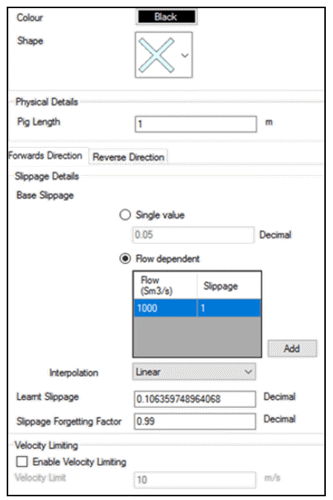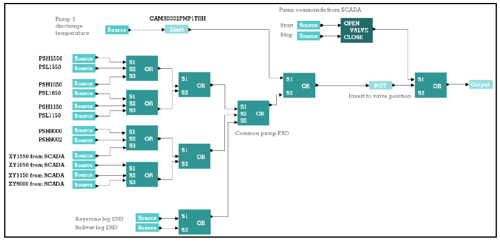The complexity of pipeline operations
Operating a pipeline is a complex task and every action has a consequence. Pipeline controllers are always learning how to make their operations safer and more efficient. It is why the way a pipeline is operated on day one is certainly not going to be how it will always be operated in the future.
A pipeline simulator is a great decision support tool when it comes to operations. It can assist with not only day-to-day tasks, but also to answer key questions for the future. Pipeline operations are captured in a simulator by setting up and running what are called ‘scenarios’.
Here we’ll explore some of the key areas pipeline simulation can help to optimize including:
- Key pipeline controller tasks
- Transients vs steady-state
- Batching and liquid composition
- Pigging operations
- Logical control schemes
Key pipeline controller tasks
It’s not always obvious what is the best way to execute an operation efficiently without causing disruption. Pipeline simulators like Atmos Simulation (SIM) Suite can help by mimicking the unique operations of a pipeline and presenting the results, allowing the pipeline controller to make an informed decision.
Experts in the field classify day-to-day operations into four primary workflows, conducted in this order:
- Nominations - Can we commit to transporting some fluid from A to B?
- Scheduling - How can our pipeline deliver all the agreed nominations?
- Controlling - What should we do now, and what will happen next?
- Reporting - What have we done?1
At an agreed interval (usually days for liquids, hours for gases), on a routine basis shippers will inform the nominations team which fluids they want transporting. Some pipelines however rely on longer-term contractual obligations. There’s always a process in place for agreeing quantities, origins, destinations and tariffs.1
Decision-making by control room personnel requires excellent spatial awareness about what is happening in the pipeline via supervisory control and data acquisition (SCADA) systems. Training and experience are crucial for pipeline controllers, something that pipeline simulation can help with through training, assessments and general support.
Transients vs steady-state
Broadly speaking, changes in pipelines can be put into two subcategories: gradual changes or rapid changes.1 A pipeline model is initially built and validated on steady-states. Once the basis of the model is sound, it can be configured for different operating scenarios that change over time. In Atmos SIM, the same underlying model serves as a starting point for these transient scenarios.
Batching and liquid composition
There are some key scenarios that take place when planning a batched operation, including:
- The effect of drag reduction agent (DRA)
- A mid-line off-take controlled on pressure at the end of a short branch
- Tracking the sources of an arriving batch by tracing its origins through mixing and splitting points
- Injecting a compressible batch such as propane into a flat section, observing how differently inflow and outflow behave as it moves through the pipeline compared to an almost-incompressible batch
Aside from changes in composition over time as batches move along the route and interface mixture forms between them, the simulation of batch movements is straightforward. Atmos Batch, a module of Atmos SIM ensures pipeline operators know the head and tail location of every batch. This can be applied to products with different characteristics such as density, viscosity and other properties.
This is a particularly ideal solution for long pipelines with large elevation changes and prominent vapor pockets (or slack) and draining and filling operations. A series of batches within a pipeline can be defined at the start of a scenario in Atmos Batch, adding in the drag reduction agent (DRA) for the most accurate results.

Figure 1: Batches and DRA defined in Atmos Batch
Pigging operations
A pipeline inspection gauge (PIG) is a solid device that’s inserted into a pipeline. They have various uses, including cleaning and maintenance, with many different types. Some are sophisticated and instrumented devices for in-line inspection known as ‘intelligent PIGs’.
The PIG travels along a route, with instrumentation along the way to detect, hold or remove it. Before pipeline simulators existed, operators would struggle with spreadsheets to anticipate the progress of the PIG. Now they can get predicted arrival times in minutes, even with several PIGs present in the pipeline at once, moving at different velocities.

Figure 2: Multiple PIGs in a pipeline
Atmos SIM has special features that assist with pigging operations. It can help to improve the estimated velocity for example by using the slippage factor (the figure with which a simulator infers the PIG velocity based on the fluid flow velocity). The slippage factor of a PIG type in a pipeline is automatically learnt by Atmos SIM during operation.

Figure 3: Configuring the properties of a PIG in Atmos SIM
Logical control schemes
Pipeline simulation provides logical blocks to configure logical control schemes. This helps with operations such as setting up emergency shutdown (ESD) procedures of a pump or compressor station.

Figure 4: Example of non-transient logical blocks
Since simple logical blocks execute their function immediately, it’s important to come up with some schemes to prevent infinite loops when trying to simulate them. Atmos SIM does this by only letting each control block execute once on each model step.
References
1 “The Atmos book of pipeline simulation”
Download chapter eight Order the book
Ready for chapter nine?
Every pipeline has a start-up sequence and emergency shut-down procedure. Chapter nine covers how surge analysis with pipeline simulation can make operations more effective.
